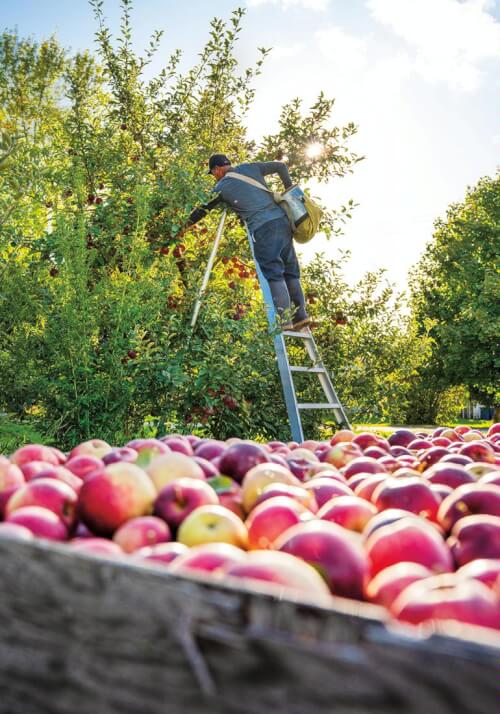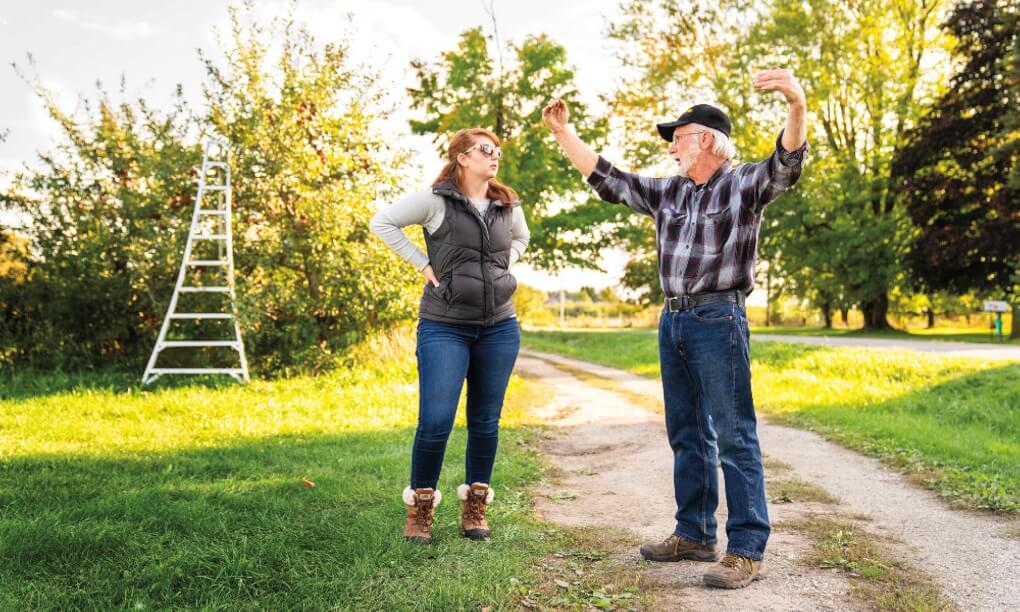Flying at a certain height above the apple trees in Jim Koan’s orchard are sworn enemies to his yield: codling moths.
Also flying at that height? Natural predators with legendary prowess as insect consumers: bats.
Koan, owner of Almar Orchards and Cidery in Flushing, about 20 minutes west of Flint, is intrigued by the possibility that bats could help control pests such as codling moths. Because the orchard is organic, he said, he relies on predators rather than insecticides to control damaging insects.
That is why he is working with Grand Valley researchers on a study to determine the extent bats consume insects that are problematic for orchards. Part of the work also involves finding ways to attract more bats to the properties.
“If we can demonstrate the bats are eating these insect pests, that may lead to different alternatives to spraying or reducing the amount of time of spraying, which is more environmentally friendly and less expensive for the farmers.”
AMY RUSSELL, ASSOCIATE PROFESSOR OF BIOLOGY
“I tried myself and it failed. I never could attract bats,” Koan said. “I know that they would be fantastic predator tools. We give up about 30 percent of our yield to Mother Nature so we have to keep predators interested in staying around.”
The hunch that bats like to make meals of orchard pests came from Amy Russell, associate professor of biology, who found evidence of those insects in bat waste while conducting research of bat consumption of aquatic insects.
Russell is working with graduate student Randi Lesagonicz at about a half dozen apple orchards in southern Michigan to monitor bat waste, checking for evidence of the pests that are harmful to orchards.
The research has received backing from a competitive grant awarded through a regional division of the U.S. Department of Agriculture. In particular, Lesagonicz, who is pursuing a master’s degree in biology, is looking for codling moths, apple maggots and tarnished plant bugs.
“If we can demonstrate the bats are eating these insect pests, that may lead to different alternatives to spraying or reducing the amount of time of spraying, which is more environmentally friendly and less expensive for the farmers,” Russell said.
For the field work at the orchards, Lesagonicz sets up very fine mesh nets as darkness falls to try to capture a bat. If successful, Lesagonicz frees the animal from the netting and places it in a specialized bag in hopes it will defecate. Approved research protocols call for the bat to be held in the bag for up to an hour before release.
Lesagonicz, who will conduct the research another one to two years to round out the sample size, has been encouraged by interactions with orchard owners, who like to hear updates about ways to attract bats to their properties. In fact, the grant provides a bat house for orchard owners who would like one.
Outreach to the general public on the benefits of bats is also part of Lesagonicz’s plan.
Russell and Lesagonicz are enthusiastic ambassadors for bats and are quick to share information about their affinity for the animals.
For Lesagonicz, her intrigue is simple: “They’re a flying mammal.” And as a student interested in wildlife research, she said this animal’s effect on the environment, from pollination to reforestation, is particularly fascinating.
“In general they have so many different roles that you don’t even know about,” Lesagonicz said. “They’re a small mammal, they live the longest of any mammal their size and their whole niche in life is so different from anything else.”
In terms of the benefits of bats to agriculture, Russell believes the work being done with the apple orchards is just one area of untapped potential. She noted that in studies of large-scale corn and cotton agriculture, experts have determined that the beneficial economic impact of bats in these large industries is in the billions of dollars.
“I think what is less appreciated are the roles the bat ecosystem services play in more diverse agricultural systems including apples, cherries, timber and more,” Russell said. “It’s an area rich for further work.”









